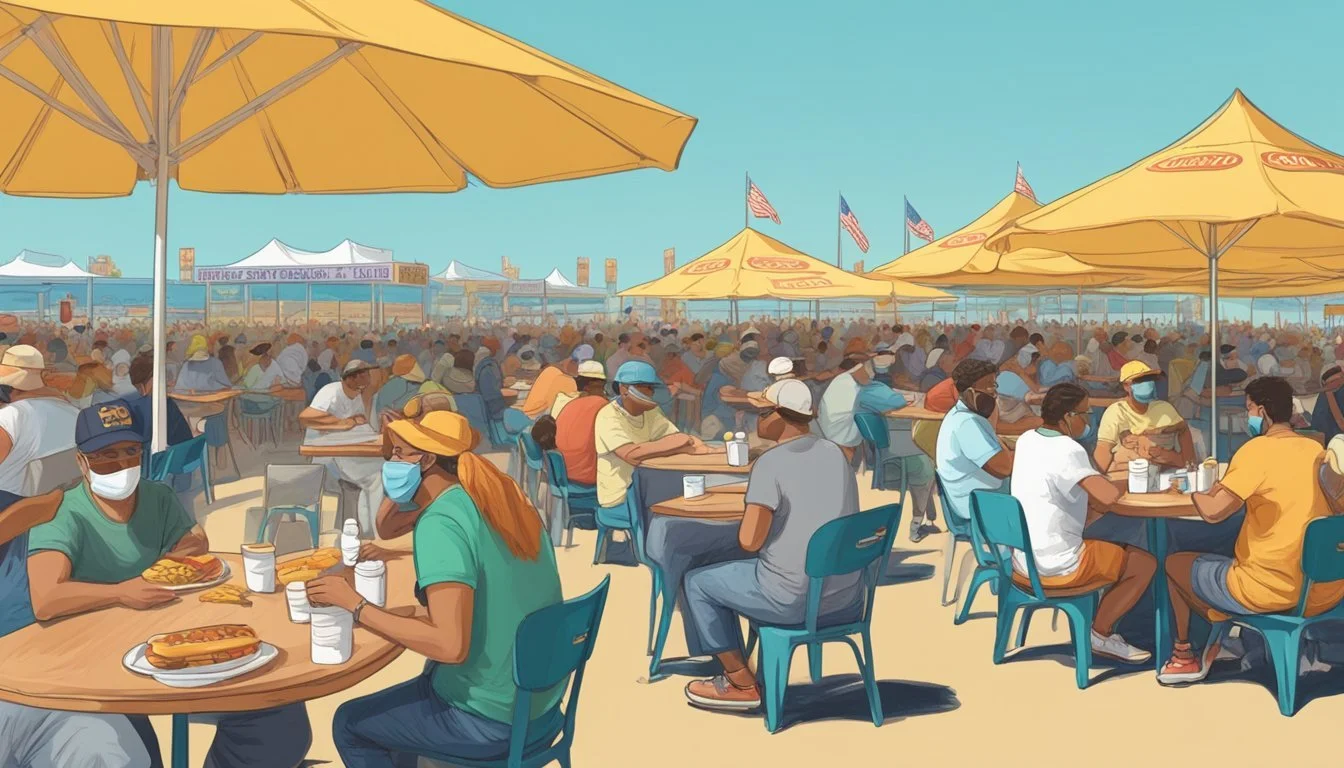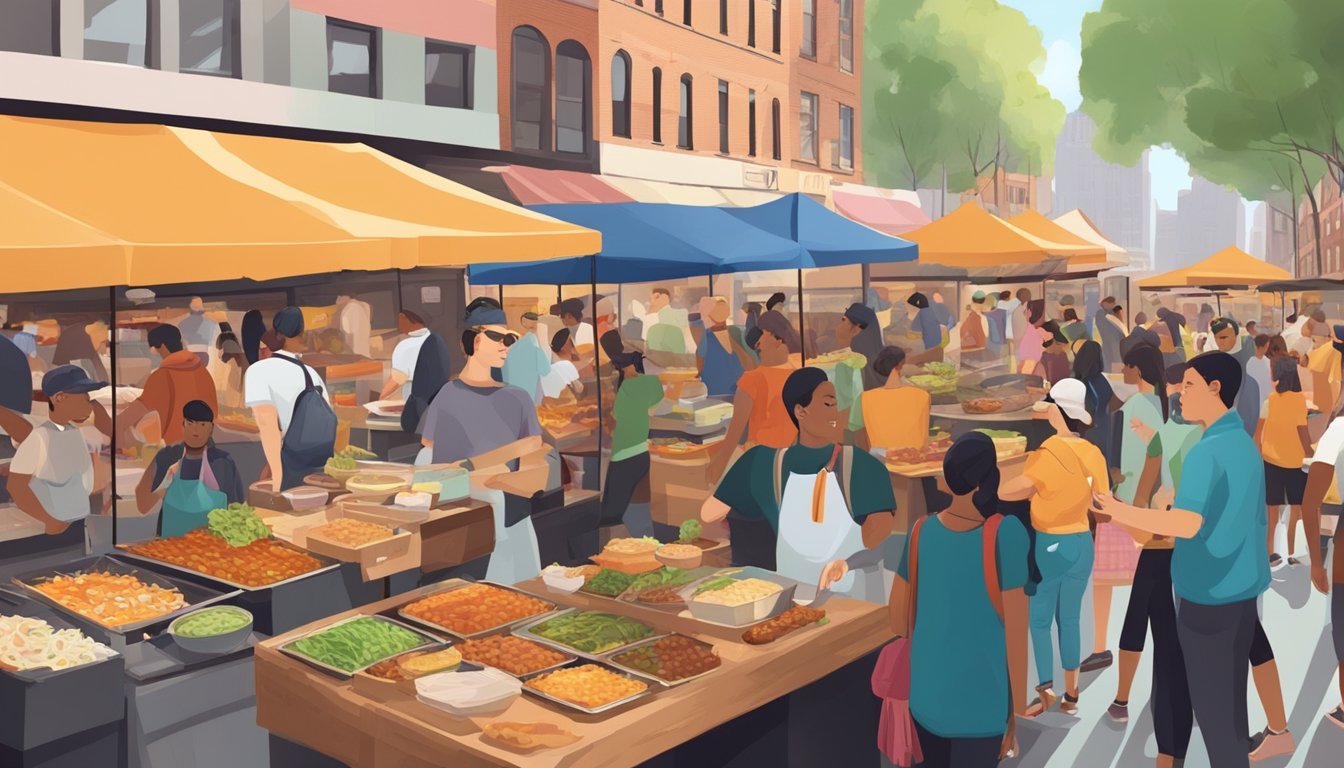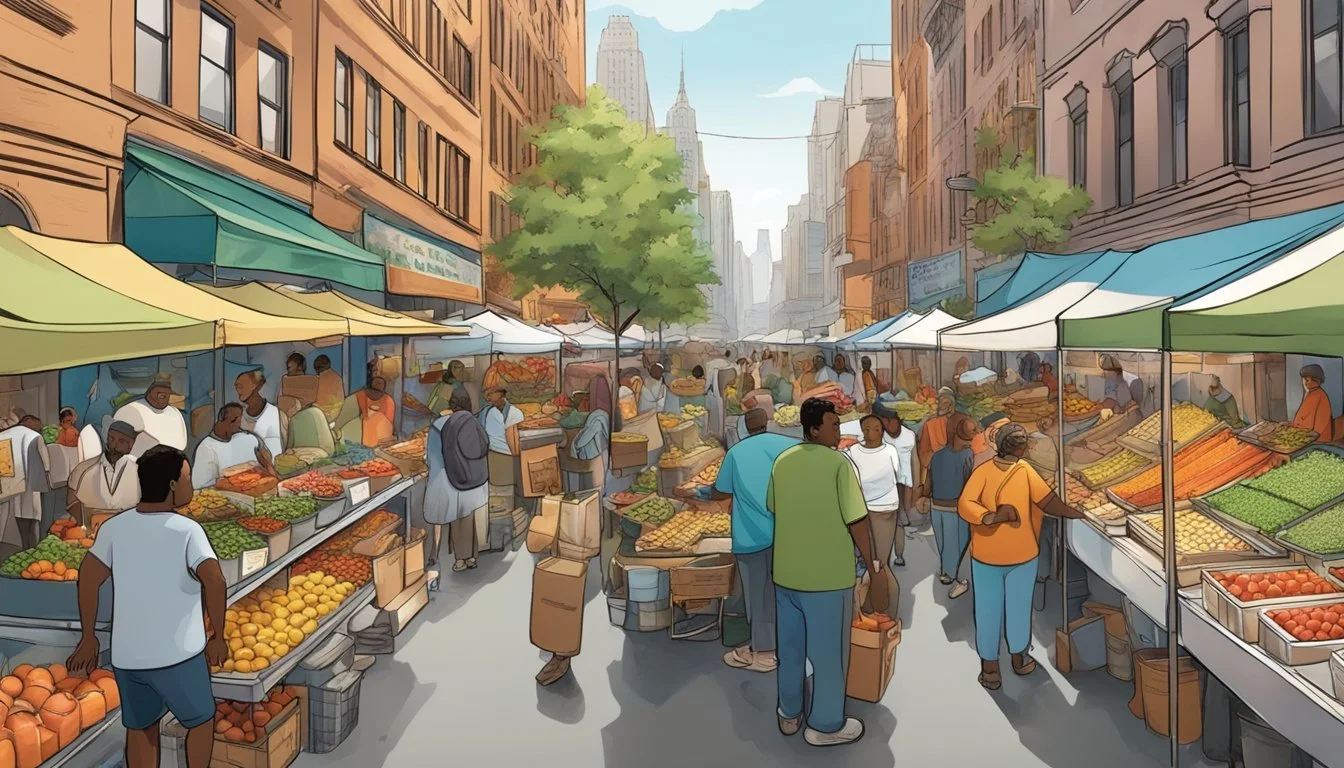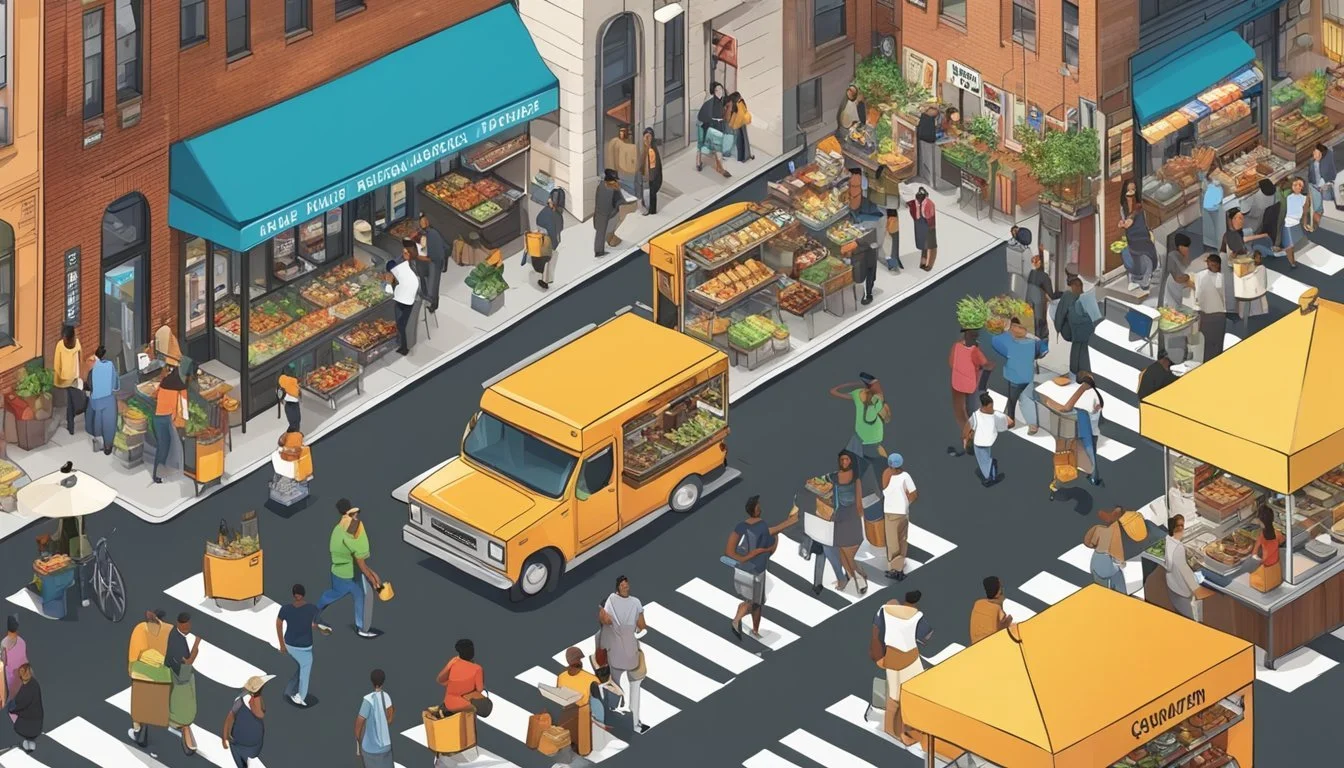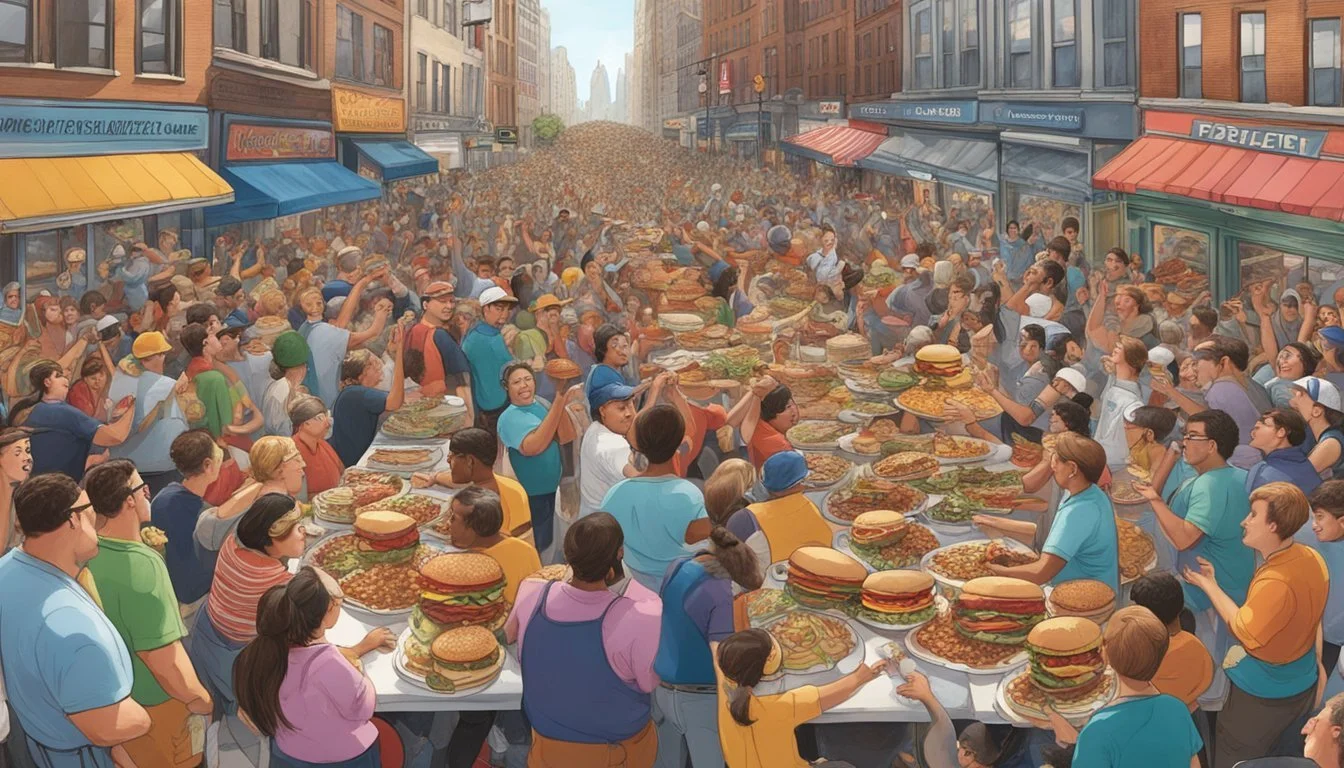New York Food Challenges
Ultimate Guide to Test Your Appetite
New York City, known for its vibrant food scene, offers more than just a diverse array of cuisines. For those with a hearty appetite and a competitive streak, the city presents multiple food challenges with a range of culinary trials that test the limits of both speed and capacity. These challenges are found across various establishments, offering patrons a chance to make their mark on the local food scene.
Restaurants throughout the city invite guests to partake in these gastronomic contests which often feature oversized portions, such as monstrous burgers or colossal ice cream sundaes. Successful challengers may earn their meal on the house, a spot on a coveted wall of fame, or even cash prizes. Recommendations for anyone looking to indulge in these contests include locations like The Pullman Kitchen's hefty Beast Sandwich Challenge, which is a must-try for sandwich aficionados.
These food challenges cater not only to individual glory but also serve as unique social experiences. Groups of friends often gather to cheer on participants, making these eateries a hub for entertainment and camaraderie. Whether it's tackling a stack of spicy wings or a skyscraper of pancakes, these challenges embed themselves into the cultural tapestry of New York City, offering a playful yet intense element to dining out.
Overview of Food Challenges in NYC
In New York City, food challenges have become a hallmark for both local and visiting thrill-seekers. These gustatory feats offer a unique way to engage with the city's diverse culinary offerings.
History and Popularity
The phenomenon of food challenges in New York City is a testament to its adventurous dining culture. Dating back decades, The Challenge of consuming unusually large portions or particularly spicy fare has captured the hearts of competitive eaters and curious onlookers alike. Establishments such as Kenka on St. Marks Place gained renown for their daring eating contests, solidifying the food challenge's status in NYC's food scene.
Types of Food Challenges
The variety of food challenges in New York is vast, reflecting the city's eclectic tastes. The Burger Challenge stands as a crowd favorite, with spots like Clinton Hall Burger Challenge throwing down the gauntlet with their towering stacks of patties and toppings. For those with a penchant for sliders, Markburger’s Slider Record Challenge offers a sprint to consume as many mini burgers as possible. Not to be outdone, The Pullman Kitchen’s Beast Sandwich Challenge lures competitors with a hefty, calorie-rich sandwich designed for the bravest of souls.
Health and Nutrition Factors
New York faces several obstacles in ensuring all its residents have access to healthy and nutritionally adequate meals. These critical provisions are pivotal to establishing a sustainable food system within the state.
Nutritional Considerations
In New York, nutritional considerations must take into account the diverse dietary needs of its population. There are concerted efforts to ensure that meals provided through assistance programs are not only sufficient in quantity but also uphold nutritional quality. Studies, such as the NYHealth Survey of Food and Health, indicate the necessity of such measures to combat food insecurity while promoting healthier lifestyles.
Challenges and Dietary Restrictions
Individuals face an array of challenges and dietary restrictions for various reasons, including economic hardship, health conditions, cultural practices, or personal beliefs. These challenges impede their ability to obtain nutritious and culturally appropriate food. Reports like New Yorkers in Need suggest that these dietary restrictions have a compounding effect, particularly in the wake of economic instability, highlighting the need for a flexible and sustainable food system that can adapt to these needs.
Impact of COVID-19 on Eating Competitions
The COVID-19 pandemic had a profound effect on eating competitions, subjecting the events to stringent restrictions and altering trends within the food challenge sphere.
Pandemic-Related Restrictions
With the onset of COVID-19, eating competitions faced immediate operational challenges. Public gatherings were limited or banned, leading to the outright cancellation or indefinite postponement of many eating contests. Events that could pivot to a virtual format did so, but faced challenges around ensuring fair play and maintaining audience engagement.
In-person contests that managed to continue did so under new health protocols. They had to reduce audience size, enforce social distancing, and increase the utilization of personal protective equipment among both participants and staff. The logistics of food preparation and handling also had to be re-evaluated, with additional safety measures leading to increased operational costs and complexity.
Shift in Food Challenge Trends
The pandemic shifted public interest in eating competitions. There was a move towards individual and remote food challenges, with participants competing from home and sharing their attempts online. Traditional venues hosting eating competitions saw a decline, while social media platforms became the new arenas for these events.
Competitive eaters and restaurants collaborated to create take-home challenge kits, which allowed enthusiasts to partake from the safety of their homes and still feel connected to the competitive eating community. This innovation helped sustain interest in food challenges while complying with public health advisories.
Cultural and Social Aspects
Food challenges in New York City are not merely about the culinary feats, but they also reflect the vibrant social interplay and the diverse cultural fabric of places like Manhattan and Queens. They offer a distinct way for both locals and tourists to engage with the city's food culture.
Food Challenges as Social Events
Food challenges often serve as social spectacles where participants and spectators alike come together, fostering a sense of community. Events such as the inferno soup challenge at Brick Lane Curry House become a platform for camaraderie, shared support, and entertainment. These gatherings are sometimes highlighted on popular channels, including the Food Network, showcasing the competitive and festive atmosphere that typifies such events.
Local and Tourist Participation
Both locals and tourists are drawn to food challenges, each bringing their unique perspectives and enthusiasm. Residents may take pride in attempting well-known local challenges, adding to their personal experience of the city. Conversely, tourists may partake in these events as a form of experiential travel, where tackling a notorious dish from a local hotspot provides an unforgettable memory of their visit to NYC. These challenges often bridge the gap between different cultures, with the shared language of food bliss creating a mutual narrative.
New York's food challenges exemplify how cuisine can transcend the plate and intertwine with the city’s cultural and social heartbeat, with landmarks like Manhattan and Queens providing an ever-vibrant backdrop for these culinary showdowns.
Food Policies and Security
In New York, food policy is paramount in addressing the challenge of food insecurity among its diverse population. Strategic policy measures strive to ensure the availability of healthy food options, especially in underserved communities.
NYC's Efforts Towards Food Security
The New York City government, under the leadership of the NYC Mayor, has consistently invested in initiatives to bolster food security. Considerable funding has been allocated to emergency food programs, ensuring that food-insecure New Yorkers have access to the necessary resources. The city has streamlined the process to access benefits programs like SNAP, supporting individuals and families facing poverty. A report highlights that these coordinated efforts have led to easier access to nutritious food options (Food Metrics Report 2020).
Food Initiatives and Council Actions
To further combat food insecurity, the New York State Council on Hunger and Food Policy, created in 2016, was codified by Governor Kathy Hochul in 2022. This body plays a critical role in merging policy creation with active measures to increase healthy food access across the state. Additionally, initiatives such as the NYC Food Standards have been reaffirmed, which set nutritional criteria for meals served by city agencies to ensure that every New Yorker has access to healthful foods (New York State Council on Hunger and Food Policy 2023 Report). These rigorous standards reflect a commitment to evidence-based approaches targeting the improvement of food environments for all citizens.
Promotions and Incentives
In the competitive landscape of New York food challenges, businesses often enhance attraction by offering a variety of promotions and incentives. These bolster participation rates and retention with appealing rewards and recognition strategies.
Awards and Merchandise
Participants who take on food challenges are frequently motivated by the prospect of winning exclusive awards or merchandise. Victors may receive free food items as a prize for their efforts or limited-edition t-shirts that serve as a wearable trophy. For instance, completing a colossal sandwich challenge could earn someone a spot on the restaurant's Wall of Fame along with a unique t-shirt, celebrating their accomplishment.
Marketing and Social Media Engagement
Food establishments leverage modern and efficient marketing tactics by engaging customers through social media. Winners are often featured on platforms like Instagram, increasing visibility for the challenge and the participant. A compelling social media post might include a photo of the triumph with catchy hashtags, driving both engagement and interest in partaking in the challenge themselves.
Discounts and Loyalty Programs
Many eateries offer discounts or loyalty program benefits to incentivize repeat customers. This could range from a percentage off their next meal to a punch card system where a certain number of completed challenges lead to a free meal. The strategy is an efficient way to keep customers returning and trying new challenges, further promoting a sustainable business model.
Economic and Business Perspectives
The food ecosystem in New York faces myriad challenges but also harbors opportunities for growth and resilience. Two critical aspects that shape this landscape are the impact on restaurants and food service, and the potential revenue generation through food challenges.
Impact on Restaurants and Food Service
The restaurant industry in New York has seen a significant shift, with food businesses needing to adapt swiftly to changing economic conditions. Food workers have been at the forefront of this transition, pivoting to new service models such as takeout and delivery to maintain livelihoods amidst indoor dining restrictions. Food challenges have prompted restaurateurs to innovate, developing strategies that prioritize business continuity and resiliency.
Adaptation:
Shift to delivery/takeout models
Implementation of health and safety measures
Resiliency:
Diversification of revenue streams
Investment in employee training
Revenue Generation Through Challenges
Creative food challenges, like spicy food contests or unique dish promotions, harness public interest and can lead to significant revenue generation for food businesses. These events not only spike sales but may also enhance the business's visibility and reputation in a crowded market. They capitalize on New Yorkers' enthusiasm for culinary novelty and community involvement.
Sales Boost:
Promotion-led spike in foot traffic
Upsell opportunities with related dishes or merchandise
Brand Visibility:
Media coverage and social media buzz
Word-of-mouth referrals
Community and Academic Research
New York City's landscape of food policy and insecurity challenges has been rigorously studied by academic and community organizations. These entities strive both to understand and inform the city’s food dynamics, based on comprehensive data analysis and research.
Food Studies in NYC Educational Institutions
The Hunter College NYC Food Policy Center collaborates with educational and research institutes like the CUNY Urban Food Policy Institute to tackle pressing food issues in NYC. These institutions have developed studies within programs like New York Food 2020 that focus on food policy, environment, health, and sustainability. Through the New York Food 20/25 initiative, projections and actions are envisaged to sustainably address the city's food system's future. A mixed methods approach is commonly used, combining both qualitative data, such as photovoice interviews, and quantitative data from sources like Twitter posts to gain a thorough understanding of the community's food-related challenges.
Research Outcomes and Key Findings
The research conducted often culminates in Key Findings that guide policy recommendation. For instance, during the COVID-19 pandemic, the aforementioned centers released reports with a vision to inform a robust food response in NYC. Their findings highlighted the critical role of food pantries, suggesting an increased reliance on these facilities. The reports advocated for actionable recommendations to improve the function and reach of food pantries, ensuring greater food security amongst vulnerable populations. These reports are reflective of a deep understanding of both community needs and systemic opportunities, aimed at forging a path towards a resilient food ecosystem.
Conclusion
New York State has faced significant food scarcity challenges, exacerbated by the COVID-19 pandemic. However, strategies deployed have aimed at creating a stronger, more just food system. Evidence indicates a notable increase in household food scarcity rates, signaling the need for healthier and more nutritious food access for all residents.
Efforts toward ensuring high quality nourishment align with New York City's Food Standards, which are designed to tackle structural inequities and provide nourishing meals to those in need. Commitments by city agencies and contractors underpin the imperative to serve nutritious foods consistently.
Effort
Food Standards
Surveys
Social Policies
Goal
Ensure access to nutritious food
Identify challenges in diverse areas
Alleviate food hardship
Challenges faced by food-insecure individuals vary across rural, suburban, and urban areas. Tailored actions are key to addressing these disparities effectively. The social policy response during the pandemic and the emergency food distribution efforts highlight the resilience of the city's systems, which have helped prevent an increase in food insecurity rates.
The road ahead involves not only maintaining but expanding resilient food networks. This ensures that every New Yorker, regardless of their socioeconomic status, has access to a healthy and nutritious diet. The collective experience during the pandemic provides valuable insights into building equity-focused food models that prioritize community well-being.



